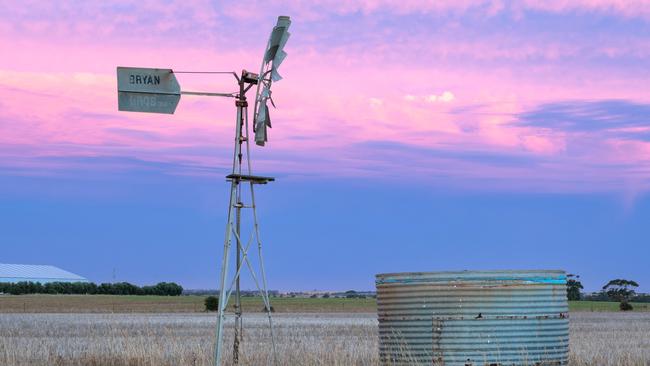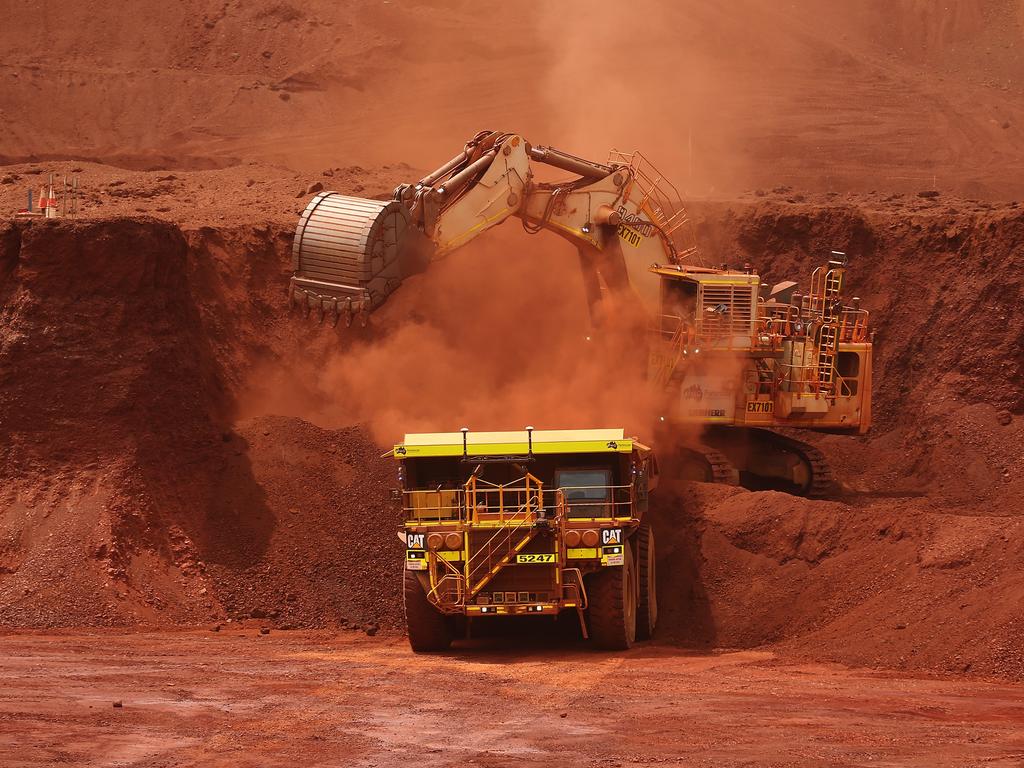Australia’s small towns that are pulling big crowds
Population growth is turning regional performers into national hotspots.

This week I am looking at the 50 cities and towns that comprise small-town Australia where towns range in size from Portland with 10,832 residents to Lismore with 28,469 residents (in 2021) and where collectively these 50 towns account for a property market accommodating 950,000 residents growing at an average rate of 7000 residents a year.
And just like my pieces on Australia’s Top 20 cities (see Real Commercial, April 21) and The Contenders (cities ranging from 30,000 to 80,000 – see May 20), this review of Small-Town Australia tells a story of rising demographic forces, of sudden sea-change surges, of unstoppable tree change and commuter towns, of towns whose fortunes are tied to the rise, and fall, of resources.
These are the common threads that bind modern Australia, that drive our national prosperity and that underpin demand for – no, obsession, with property. Come with me on a swashbuckling tour of the best property prospects across Small-Town Australia.
The data is sourced from the ABS’s Significant Urban Area database tracking population movements in Australia’s 100 largest towns. In this analysis I have compared population change in the bottom 50 towns between 2001 and 2021 and where the SUA definition can include part of one or more local government area.
Buckle up, we’re off and running.
Regional rockets
Towns with more than a 50 per cent net growth since 2001
Over the first 20 years of the 21st Century the Australian nation increased by 34 per cent to 25.7 million. Much of this growth was concentrated in cities like Melbourne, Sydney and Brisbane but the rocket fuel that clearly propelled these bigger cities forward, spilled to much smaller towns that consequentially grew at breakneck speed.
Take, for example, the exemplar of an Australian fast-growing small town, Yanchep, located 55km north of the Perth CBD. Yanchep contained 3852 residents in 2001 and then jumped 309 per cent to 15,742 in 2021.
In just two decades, this coastal village morphed into a curious mix of a commuter town, a sea-change town and no doubt a lifestyle locale, as well. I have never been to Yanchep but with growth like this it could well be Australia’s premier Tradie Town.
The more lifestyle and/or resources drivers a town commands, the more spectacular is its growth trajectory. And so there’s often a remarkable similarity between these regional rocket towns.
Yanchep, Bacchus Marsh and Victor Harbor are all located between 60km and 80km from the centre of an Australian capital city. It’s almost as if there’s a fixed distance that daily commuters (and weekend lifestylers) are prepared to tolerate in order to access and live their preferred way of life.
The performers
Towns with net growth of 30-49 per cent since 2001
They aren’t the fastest growing within the Small Town Australia genre, but they are steady high-growth performers. This lot includes the usual-suspect resources towns such as Emerald (up 44 per cent since 2001) and Broome (up 31 per cent).
But it also includes some interesting fast-growing regional towns seemingly based around agribusiness, namely Echuca-Moama up 33 per cent and Bairnsdale up 30 per cent. Although, while agriculture is no doubt booming in these regions now the drought has ended, both towns also attract lifestylers and retirees to nearby rivers and lakes. Multiple demand drivers (eg agribusiness and lifestyle) are like combine to push a town forward.
Murray Bridge in South Australia is growing surprisingly fast – up 44 per cent since 2001. A prison was opened in Murray Bridge in 1987 accommodating about 500 inmates however the town’s rise thus far this century must be due to other factors such as agribusiness and the town’s location within striking distance (80 km) of the Adelaide CBD.
Again, I keep coming back to this concept of a Goldilocks zone operating within 80km of a capital city CBD being the tolerable edge of the daily commute and the weekend lifestyler.
And then there are the straight-up commuter towns such as Morisset- Cooranbong, located on the western edge of Lake Macquarie between Sydney and Newcastle and where the population has increased by 41 per cent since 2001.
Interestingly Morisset-Cooranbong is not only a commuter town to both Sydney and Newcastle but it, too, attracts lifestylers, weekenders and retirees. Multiple points of appeal drive household growth and property demand.
Simply solid
Towns with net growth between 20-29 per cent since 2001
Some towns tick along at a solid but not spectacular rate of growth often averaging about one per cent per year which is roughly in line with the level of natural increase. And which means that out-migrants are offset by in-migrants. These places are “steady state” towns.
And over the 21 years to 2021 these towns include, surprisingly, some sea change communities such as Ballina (up 20 per cent), Bateman’s Bay (up 22 per cent) and the rhythmically-monikered Ulladulla at 25 per cent.
Sometimes sea change communities in particular are constrained by strategic planning controls which can limit residential development opportunities forcing would-be buyers to divert to overspill nearby communities.
But this steady-state cohort of Small Town Australia communities also includes Port Hedland (up 21 per cent) which is growing quite modestly for a booming resources town as well as foodie-type tree change communities such as Kingaroy, up 25 per cent since 2001, and Mudgee, up 28 per cent over the same time frame.
For some unknown reason, some places just click with the foodie fraternity and burst into life including, for example, the Huon Valley south of Hobart and cute towns such as Cobden (cheese) and Timboon (distillery) in Western Victoria. Oddly a gin or a whiskey distillery seems to be de rigour for the attraction of Australian foodies.
Struggle towns
Towns where the population has declined since 2001
Australia is an immigrant nation and our fertility rate isn’t too far below replacement. Since 2001 about four million immigrants have arrived. These broad demographic drivers generally deliver some measure of growth across the urban landscape.
However, some towns according to the SUA database have a lesser population in 2021 than in 2001. The most significant decrease was the net loss 18 per cent of the population from Broken Hill over this 20-year period.
Losses from Mt Isa, down 10 per cent since 2001, are also significant within the context of an otherwise growing nation. Often the losses over 20 years are marginal, meaning barely one percentage point in total in places such as Lismore, Alice Springs, Moe-Newborough and Lithgow. And in other localities such as Port Pirie and Port Augusta there is often some growth in nearby communities meaning that the overall region remains relatively stable. Population losses appear to occur where resources are depleted, where a manufacturing establishment (or power plant) scales back or closes, where major projects are completed (eg. The Ghan railway line construction), where the centre of business activity and administration shifts from an historic inland centre (such as Lismore) to a lifestyle centre evolving on the nearby coast.
Australia is a growing nation and there are far more opportunities for the property industry in growing communities than there are risks in being caught in a shrinking market.
Conclusion
Multiple demand drivers on or near the edge of the Goldilocks Zone
Property players in Australia’s smaller markets are subject to many of the risks that apply in bigger markets. The industry, generally, is forever seeking to deliver the right product to the right market at the right time.
And so, to alleviate some of these risks it is better, from a demographic perspective, to operate within a market that is underpinned by multiple demand drivers including retirement, lifestyle, weekender, sea change, tree change, resources and perhaps even solid agricultural towns no longer stricken by drought.
I am mightily impressed, for example, by the evidentiary growth in places such as Murray Bridge, Echuca-Moama and Bairnsdale since 2001. This is new. I haven’t previously seen (or noted) a country town well removed from a capital city attract above-average growth over decades.
I suspect there might be more towns thriving in the Under-10,000-population (Tiny Town) category.
Indeed, there are clearly opportunities for property prosperity at all levels of the Australian urban system, even in Small-Town Australia.
Bernard Salt is executive director of The Demographics Group; research and data by Hari Hara Priya Kannan






It is the property market that flies under the radar, but which generally operates across the residential, industrial and commercial markets in far bigger cities.